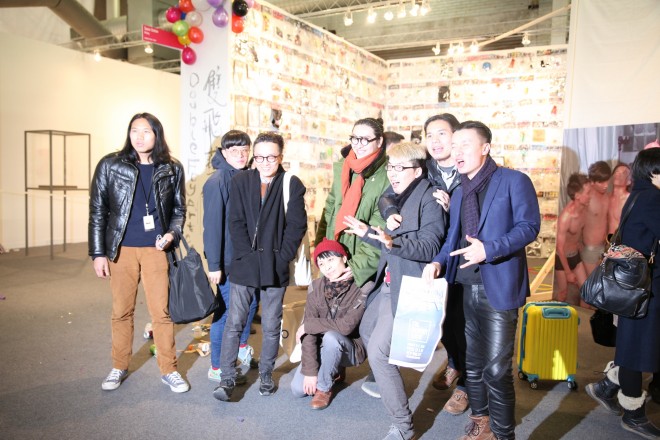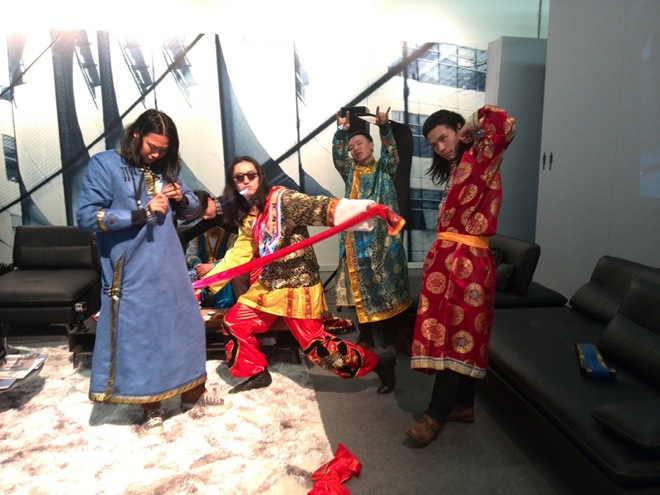Editor’s note: WeChat / Weixin is a mobile app in China that has taken off like wildfire since it was first released in 2011—now with over 300 million active users. Originally, it started off essentially as a mobile text and messaging app, much like WhatsApp, but gradually added photo and text sharing functions, becoming something like—in Western tech terms—a cross between WhatsApp, Instagram, and Twitter (or like Kakao Talk in Korea or Line in Japan). Newest versions of the software include VOIP functions similar to viber, extending the functionality of the platform even further. Indeed, it has stolen much of the buzz from Sina Weibo, China’s answer to Twitter, for all kinds of reasons (see link here and here). Owned by the Chinese tech giant, Tencent, the service has in the past year bundled additional services like an online payment service, mobile payment services, online wealth management, taxi calling service, among others.
“Beep, beep…” goes the WeChat notification in my groups, and I reach out to silence it. It is a group so popular that, like many other members, I have been deleted from it and rejoined it again and again. The reason for its popularity? What’s in it, and its name—The Best Auction Group in China.
An “auction group” is led by an auctioneer who is responsible for introducing a piece and its artist, announcing prices, creating time limits and setting the starting price. Starting prices for this WeChat auction normally range from zero to 10 RMB, shooting up into the thousands in the blink of an eye. Items go up at all hours and times, but bidding usually starts at 10 or 11 pm (because the auctioneer happens to be a henpecked husband with a full-time job). The group’s members list is a mixed bag of artists, curators, gallery directors, critics and, of course, a ragtag bunch of professional and amateur collectors; and they aren’t always strictly business—members keep up lively chatter about all and sundry into the wee hours of the night.
The group’s auctioneer is none other than Yang Junling, a member of Doublefly, an art collective in China. Doublefly was founded in 2008 by nine young artists who maintain their individual artistic practices while presenting a united stylistic front at various public events and exhibition openings. A percentage of the auction proceeds was set aside along with donations from older artists to fund Doublefly’s trip to the Armory art fair in New York—at the Space Station booth, where they received extensive coverage in the States (here, here, and here)—though in the end, it was not enough. The proceeds will now go into a Doublefly fund to support their future artistic endeavors. And so the moving parts become clearer—but who knows how long the cogs will continue turning?

微信拍卖截图(双飞艺术中心提供)

《你中奖了!》,空间站(560展位),2014纽约军械库展览(照片由空间站提供)
When I interviewed Yang over WeChat, he recalled how it all started: “Lin Ke and I were taking the high-speed rail link to Shanghai for the closing ceremony of a show in Shanghai. We had watercolors with us, and were painting the scenery outside the window. We’d created a WeChat group to make dinner plans after the show, so I decided to post pictures of our drawings to the group and auction them off for fun. During that five hour trip, we did 62 paintings, and sold them for 120 RMB a piece. That was the first time ‘The Best Auction Group in China’ got together.”
Later, other artists continued the habit of posting sketches from train trips, and the ball started rolling. The WeChat group evolved into an “auction group” as content began to diversify. And what diversity! Items sold include a voice message left by Li Zhenhua (a curator), a promise by Li Liao to call the highest bidder “Mother” or “Father,” a Spring Festival couplet by He Chi, Kang Xueru’s painted “foreword” for Art Time [a magazine], Geng Jianyi’s spare television set, Dai Zhuoqun’s hand-carved seal…and the list goes on. They even made room for charity; after auctioning off the 3.04 m³ left over after the remodel of Chen Xiaoyun, Hong Hao, Cui Jie, Ye Linghan and Jiang Zhi’s shared workspace—all of the proceeds were donated to Prince of Peace Children’s Home in Tianjin. In particular, Liu Wei’s sketch done for the solo show in White Cute fetched 23,000 RMB, setting a record for this auction group.
As an active collector in the Wechat auction, the curator Li Zhenhua values the spontaneity of these auction groups: “Spontaneity could be the most fitting [word] here. Artists are still the creative motor behind all this. The birth of a new media and new methods is itself an art—not artists creating works, but creating a new set of rules and methods through this system.” (“Xinxing de Yishu, Xinxing de Meiti he Shequan” [Emerging Art, Emerging Media and Communities”, by Li Zhenhua, p. 22, in Yishuke magazine, 2014).
Compared with traditional auctions, this direct, open relationship bypasses the art market and the obstacles systemic to established channels. Often, the significance of a purchase goes far beyond a simple monetary exchange—especially in the case of art work. What does the sale of an object or service mean to the person who once possessed it? In this WeChat group, the artist is placed in direct contact with the buyer, who is often a creative professional (many curators, critics, art organization staffers and other industry insiders abound). Among the jokes and the horsing around, a system of evaluating the value of art seems to be established with the simplicity of an internet connection—yet a note of tension simmers under the surface. In this era of Taobao (the hugely successful Chinese online shopping and auction site, not unlike eBay), consumers are on constant alert for scams, and the guidelines for such e-commerce are short, fast, and limited. Thus, the opportunity to own a genuine example of a well-known young artist’s work (or concept) proves demonstrably tempting for the “masses.”

双飞艺术中心在2014军械库展览空间站的展位前合影
As for the original significance of these concepts for sale, they may very well end up being consumed by this cycle of consumption. Here, large galleries cannot inflate prices, and formidably funded organizations cannot engage in bidding prices up. There are no hidden currents or secretive conspiracies; there is only the cult of the self, and all of the social media trappings that go with it. Among the flashing emoji/animation and minor bids, we witness a dance of a mobile private collection in motion. On WeChat, everything happens in the blink of an eye; after the fact, one wonders if they ever happened at all, but these auctions don’t need to last forever, because their very existence, once upon a time, is enough.
When asked whether the group auction format “liberates” the artist, Yang gave a well-considered response, “The kind of independence found in our auction group goes hand in hand with the freedom of a mobile life. It shortens the distance between art when it happens, when it is produced, and when it is collected, and brings people face to face with each other. Anyone can be an artist, and anyone can be a collector. Group auctions act as a supplement to traditional auctions, galleries and art fairs.”
In the 56 days between November 28, 2013 and January 22, 2014, “The Best Auction Group in China” put 273 items from 108 individuals up for auction; of these, 266 were sold, 2 withdrawn, and one piece with an asking price of 5 million RMB remained unsold. Eleven works were intangible, and four items were flooded by WeChat messages. As of January 22, 2,586 images had been posted to the group.
Some of the participants:
Li Zhenhua, Shi Yong, Duan Jianyu, Chen Wei, Li Shurui, Ye Linghan, Bao Dong, Yu Ji, Chen Xiaoyun, Shi Jinsong, Cheng Ran, Li Ran, Jiang Zhi, Sun Xun, Li Wei, Geng Jianyi, Chen Zhou, Li Liao, Guo Hongwei, Liang Yuanwei, Liang Yue, Lu Yang, Chen Tiaozhuo, Qiu Anxiong, Zhao Zhao, Liu Chuang, Cui Cancan, Yan Xing, Xu Zhen…
http://www.doubleflyart.com/blog/3606#sthash.qqZ3hjb6.dpuf

2014纽约军械库展览特殊表演,贵宾厅(照片由空间站提供)

双飞艺术中心在纽约